Tomorrow is World TB Day and A Larger Scale will feature a special photo-essay sharing the story of one of our patients here in Lesotho and the teamwork that goes into treating patients with MDR-TB.
But first, let’s go for a walk. In 1824, Chief Moshoeshoe and his people had just escaped a siege by their enemies and needed to flee to safety. He led them on a nine-day trek through the mountains, eventually establishing camp atop a rocky plateau at Thaba-Bosiu, where cattle could graze and the community could be defended from invaders. This new home would become the foundation of the Basotho kingdom, where Moshoeshoe the First would serve as king for nearly fifty years.
Each year, the Moshoeshoe Walk celebrates this founding journey, with participants hiking 116 kilometres of mountain trails in three days. The 200th anniversary of the original march brought hundreds of people from across Lesotho and Southern Africa, and one guy from Saskatchewan. In today’s post I’ll share more of that history, along with tales and photos from the trail.
And yes, the title is sensational, but this is a story that’s got it all.
Day 0
While the siege that drove the flight of the Basotho took place at Butha-Buthe, the organizers of the hike have started their version of the walk at Menkhoaneng, birthplace of the king. For those coming from the capital city of Maseru, the walk begins with a bus ride to the starting point. At the taxi rank I met Mario, an Italian working for the European Union. Since we were both camping, we decided to travel together. The bus was packed and we found ourselves in the party section near the back, music blasting, loud laughter and our fellow passengers getting into the Savanna Dry. One got a little too loud and rowdy, spilling his drink and leaving us Savanna wet.
That night we camped at the ‘Mate Primary School near Menkhoaneng. This is where Moshoeshoe, born Leqobo, was raised. He took the name Moshoeshoe, which means razor in Sesotho, after “shaving a rival chief’s beard” by stealing his cattle. Much of the history of the region revolves around the accumulation and distribution (intentional and unintentional) of cattle, still a principal source and sign of wealth today. It was here that the future king went through the traditional initiation camps, emerging as a leader among his age-mates.
Children from the village met the travellers with carved walking sticks for sale, but I’d come with my own. I’d bought a decorated molamo, the traditional stick used by shepherds, near the border in Maseru. I learned on this trip that when decorated it’s not a molamo, it’s a lebetlela, and it’s used by young men who have been to the initiation camps for herding sheep and cattle and for self-defense. My carrying one sparked a great deal of laughter and commentary. Apparently seeing a lekhooa (white person) carrying a lebetlela was a bit liking seeing a car go by with a dog behind the wheel. Fortunately, this oddity was warmly welcomed, leading to dozens of conversations and new pals along the trail.
We pitched our tents in some trees a ways off from the Blue Ribbon (South African Wonderbread) stage blasting Amapiano. Along with water and food, sleep was hard to come by during the three days. That first night, the music went on well past midnight. At three AM we were all awakened for a mad, middle-of-the-night rush to distribute the three t-shirts that would be our uniform for the rest of the walk, a different colour for each day.
Day One - Menkhoaneng to Thabo-Phatsoa - 31 km
At five AM, the loudspeakers were back, letting us know it was blue shirts for day one and that the walk would commence shortly. The morning started with a 6 km walk to an open area for the kickoff ceremonies.

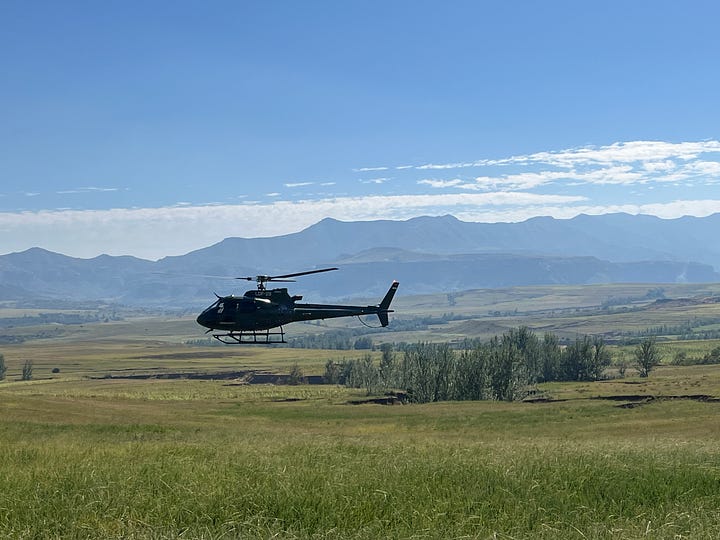

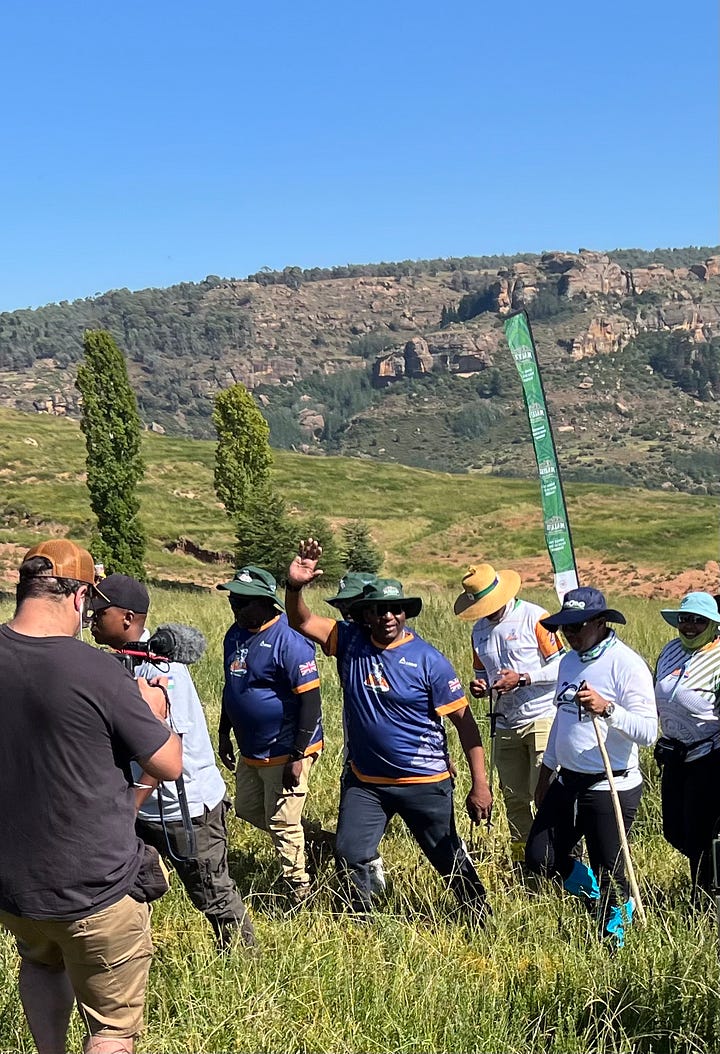
There we waited a couple of hours for the arrival of Prime Minister Sam Matekane and Queen ‘Masenate Mohato Seeiso. This would be a theme of the walk, waiting for dignitaries before we could move on. People were in good spirits that morning, with songs and dancing to warm people up for the trials ahead. We were told over a thousand people had signed up for the walk. The great majority of the walkers were Basotho, with large contingents from Botswana and South Africa and a small number of Europeans and Americans, mostly from the diplomatic service.
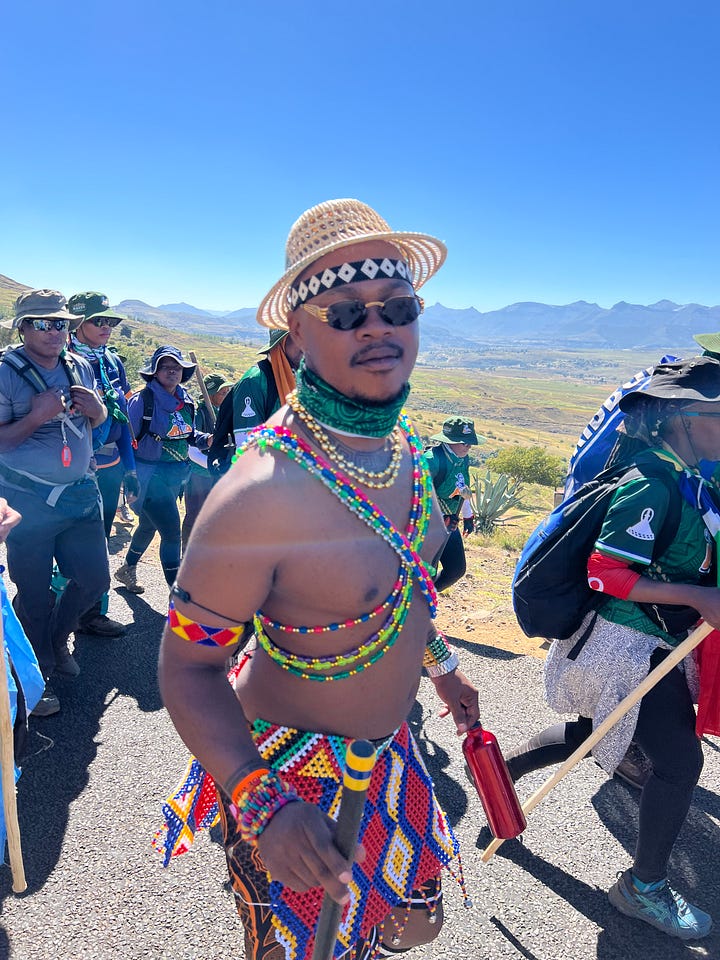
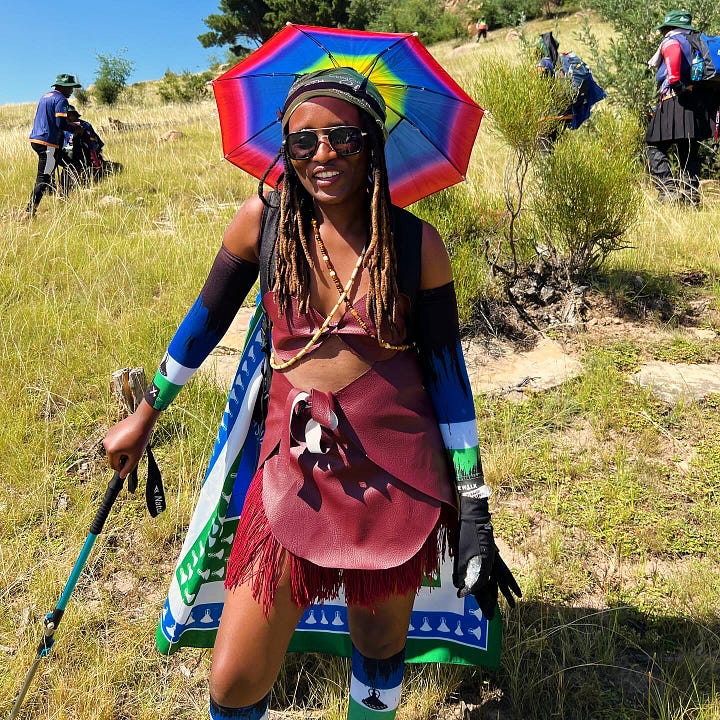


Time wore on and people became frustratey with the delat, starting off into the hills before the speeches were finished. The PM would take off in his army helicopter shortly after the walk began, but not the Queen. She hikes the entire route, keeping a brisk pace the whole way. By tradition she leads the walk, always finishing first. I was sternly warned by friends in the know that passing the Queen is a major faux pas.
I pass the Queen. And pay for it.
The real walk finally began, and people joyfully headed over the first ridge and down into the next valley. As frequently occurs, small talk had turned to a medical consult, and I was advising my walking companion on how to treat her son’s asthma. Just then, we heard singing coming from behind us. It was the Queen, accompanied by her royal guard marching in double time, catching up after the ceremonies had delayed her start. We exchanged a brief hello and I then sped past to take a photo and followed a group that had taken a shortcut up a steep hill.
That’s when I started to feel awful. It was thirty-five degrees in the sun and no shade or clouds to be found. I couldn’t keep up with water, my stomach was angry and I was likely going faster than I should have. I did my best to power on, marching with the Queen’s crew until the lunch break, but by the time we got there I wasn’t sure I had it in me to continue.
A New Name
As I arrived at the break site, a young man stopped and told me that since I was carrying a lebetlela I must have a Sesotho name. Names here tend to have literal meanings, like Mpho (gift), Teboho (thanks), or this young man whose name was Tsepo (hope). Visitors who spend a longer time here are often given a Sesotho name, Abe’s classmates have dubbed him Tsepong (trust) and Gus’ teacher calls him Thato (will). I admitted I didn’t have a name yet. Just then a flatbed truck rolled by with workers on the back. Tsepo shouted to them, “ what should this guy’s name be?”
One guy shouted “Muso” and the others nodded in approval. “What’s Muso?” I asked. “It means government,” Tsepo told me. I suppose there are more formal naming ceremonies, but the randomness and name both seemed to fit. So Muso it is.
The afternoon turned out to be a lighter section, mostly gravel road followed by a climb up a rocky slope to another school ground campsite. Uninspired by the prospect of packing up my tent for the next day’s promised 2 AM rise, I opted for a spot in a classroom where mattresses were spread out on the floor and over desks.
Day Two - Thabo-Patsoa to Malimong - 54 km
Three or four hours after dropping heavily asleep, the alarms of the other men in the classroom started to go off. It was time for the big day. By 3:30 we were marching, headlamps on. The cool morning was a welcome relief and we breezed along a dirt road before coming to a steep mountain climb. Just after five we came to a summit in the dark, looking back to see kilometres of torch lights snaking their way up the mountainside. The darkness turned to silhouette to glorious cliffs and peaks that seemed to appear magically from the void.
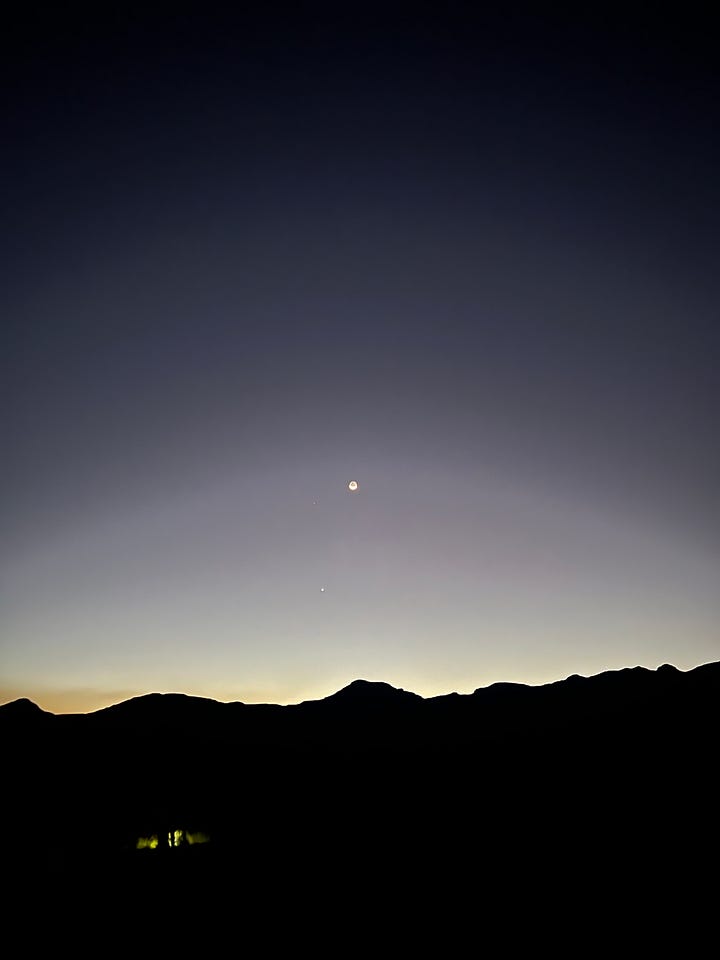


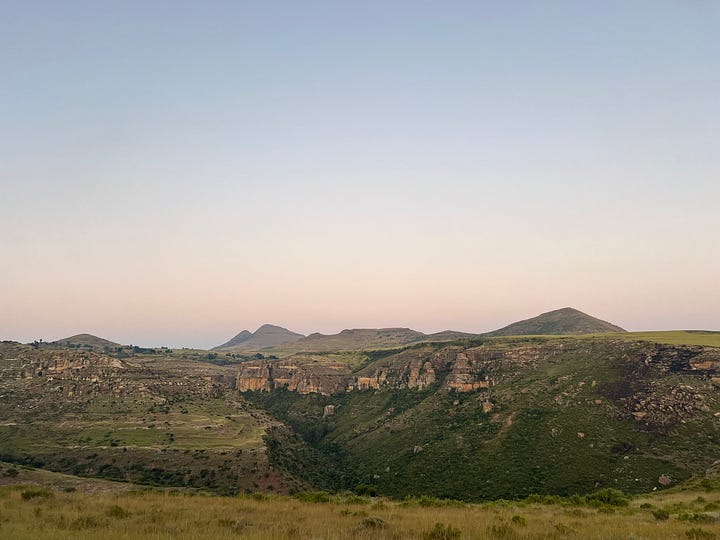
We continued to trace the trek of Moshoeshoe and his people through a countryside that would have looked very much the same two hundred years before: ridges and gullies, river crossings, small villages of rondavels. The trail took us through the Lipetu (collarbone) pass, so named because Moshoeshoe’s grandfather Peete had been killed and eaten by cannibals there on the original journey, and his collarbones were the only part of him that was recovered and buried. As we passed, children from the nearby villages came out to watch and older women cheered the walkers on with high pitched ululations.
The “white road,” a seemingly interminable ascent just before lunch, thinned the group out to a couple hundred hikers, with most opting to take the bus to the campsite. After a power nap in a spot of stolen shade, I decided to carry on.
The next few hours are a bit of a blur, weaving in and out of conversations and navigating up and down treacherous paths. We eventually came to a spot called Mahlatsa where legend has it that a group of cannibals had vomited the remains of their victims and we were told to each add a stone to the memorial pile of rocks.
The Cliff Face
It was at this point that the women were separated from the men and given a half hour head start for the final stretch. Then we ran. The pace was hectic as the sun set and we headed across a river valley. Fortunately for us if not the local farmers, it’s been a dry year and we didn’t have the waist-deep crossings of previous years. The downside of that dryness for us was racing through a canyon, our lungs filling up with the white dust kicked up by hundreds of tired and shuffling feet.
Finally we arrive at “the cliff face,” and discover that the last four km of the day’s fifty-four are essentially straight up, with false horizon after false horizon tricking you into thinking you’re done when there’s still a long way to go. This is where I nearly broke, gastro-sick and exhausted. I overheard Mario tell another hiker that this was the hardest thing he’s ever done, and I couldn’t disagree. I limped the last half hour, leaning heavily on my lebetlela, and stumbled into the campsite at Malimong half-dead, convinced there was no way I could set up my tent, let alone walk again the next day.
Day 3 - Malimong to Thaba-Bosiu - 31 km
Yet when the wake-up came over the speakers at four, I couldn’t think of anything better to do that day. I packed my bag, pulled fresh socks over blistered feet and put on the day’s green shirt, sponsored by Maluti beer. Besides, today is the flat day!
The “flat day starts" with climbing a mountain, an ambitious hike for an ordinary day. But it still felt like relief compared to the climbs of the previous day, and it’s here we stop for a history lesson from the hike marshall (and here’s where the sensational title pays off).
Malimong: place of the cannibals
Moshoeshoe and his people were not the only ones on the move in this period. The lifaqane was a period of thirty years of war and displacement in Southern Africa, influenced by settlers from Europe, the ambitions of the Zulu king Chaka, and new developments in military strategy and technology. Thousands died from bloody wars, famine and disease. One group, who would come to be known as the Malimo (cannibals), was driven into the Maloti mountains where they were unable to produce crops and soon had eaten all their livestock. They chose to eat the eldest and weakest in their tribe, and later took to hunting passersby. They hadn’t practiced cannibalism before this time, but declared they were driven to it by desperation and hunger. The refugees from Butha-Buthe to Thaba-Bosiu were set upon numerous times by the Malimo and some of their party were lost to their attacks.
Once he was established in Thaba-Bosiu, Moshoeshoe returned to the land of the Malimo, the people who had eaten his own grandfather. Rather than attacking and killing them, he chose to forgive them, saying he couldn’t desecrate the grave of his ancestor. Instead, he lent them cattle and helped them to come out of hunger and poverty, and they left the eating of human flesh behind. This practice of Mafisa, the lending of cattle to those in need, was central to his success in solidifying the Basotho nation.
The rest of the day’s walk was stiflingly hot, the last half through fields and over baking tarred roads. We were buoyed to the finish by the songs and spirit of the hikers and the hope of arriving at our destination.
Thaba-Bosiu proved to be a natural fortress for Mosheoshoe’s people, a high plateau where the Basotho could raise cattle, but also defend themselves against attackers. They fought off attacks from Afrikaaners and numerous other groups. But it was Moshoeshoe’s diplomacy that made the big difference. He found ways to appease Chaka and not be a target of his ambitious expansion. After fending off one group of attackers he sent them cattle as they retreated, saying that they looked hungry and turning an enemy into a friend. He also brought different Basotho clans together as well as bringing Zulu, Xhosa and San people in his territory into the Basotho nation. One of the key ways of cementing these relationships was to marry into the other groups, and his 144 wives were proof of this strategy being thoroughly employed.
The result is a country that is described as one of the most homogeneous in the world, but really is the result of the unification of the Bakuena (crocodile), Bafokeng (hare), Batlokoa (wild cat), Bataung (lion), Basia (cat), Bats’oeneng (monkey) and Mahlokoe (domestic fowl) Basotho clans and other groups that became the people of today’s Lesotho. It’s a remarkable story of a people coming together in the wake of devastation and surviving as an improbable island of relative peace within a larger nation. Walking for three days alongside Basotho celebrating two hundred years since the beginning of this remarkable story was a moving experience of history in motion.

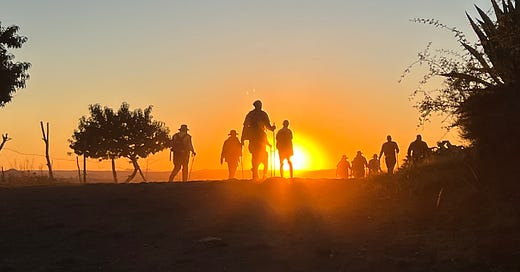




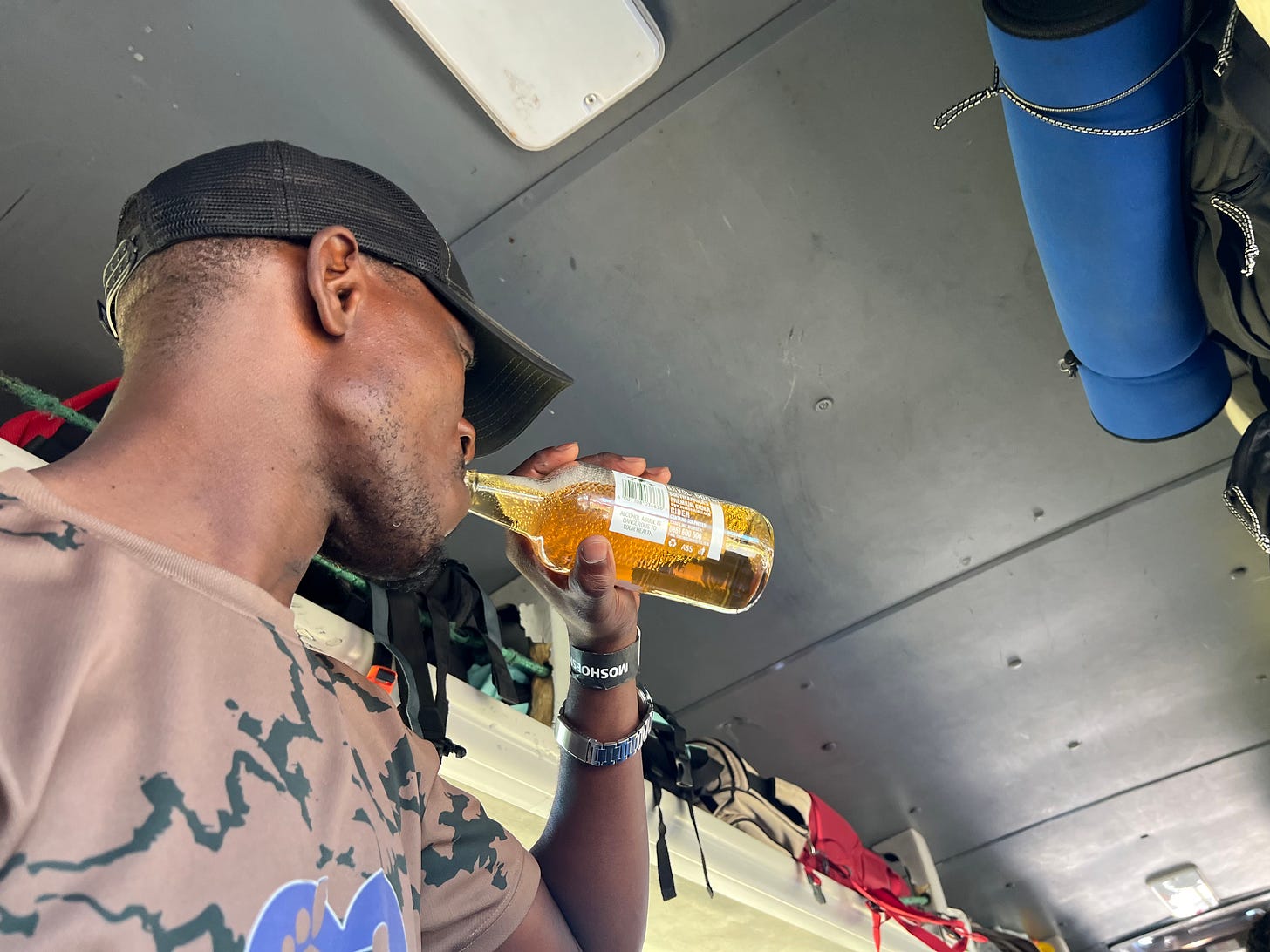
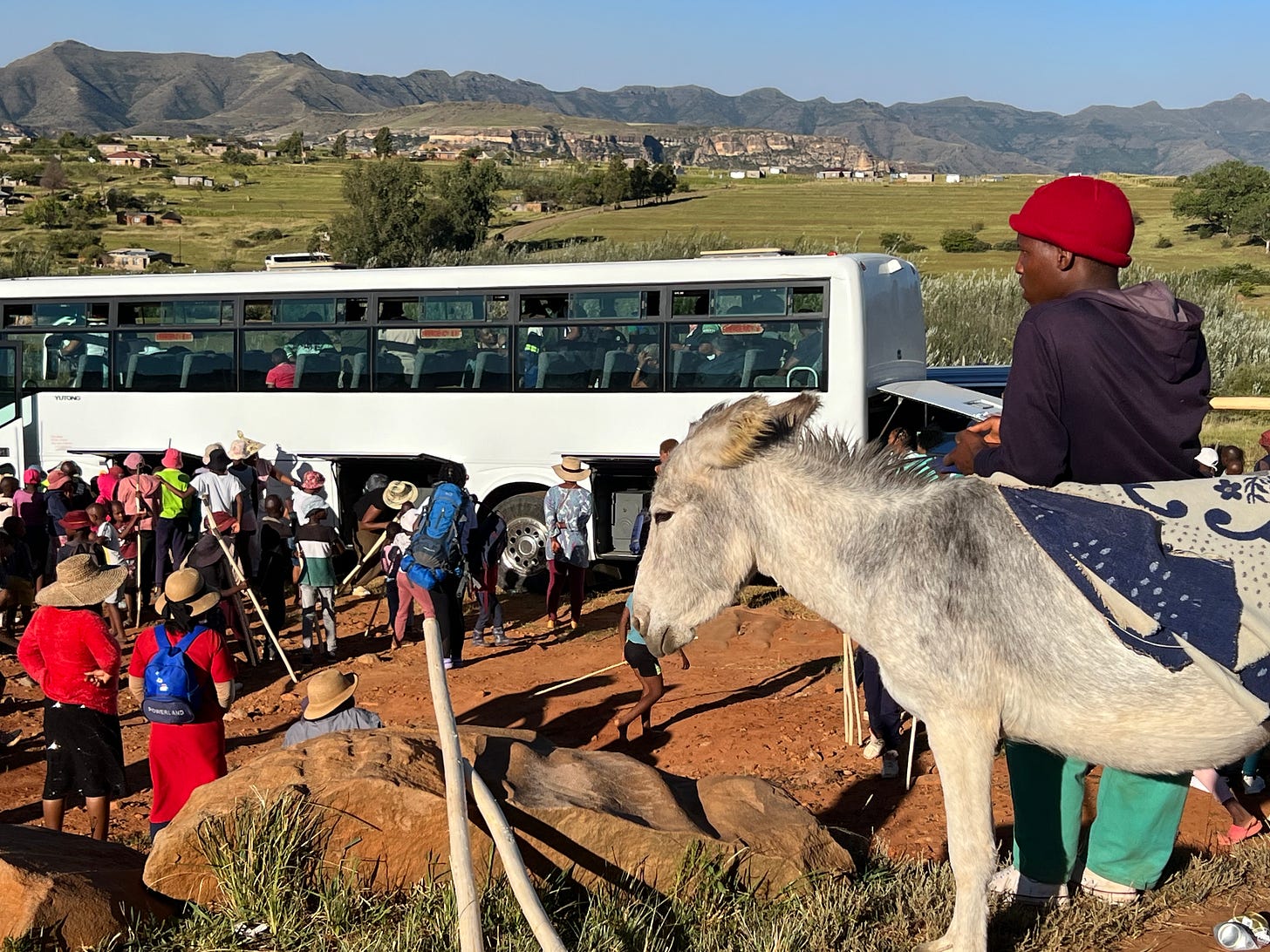
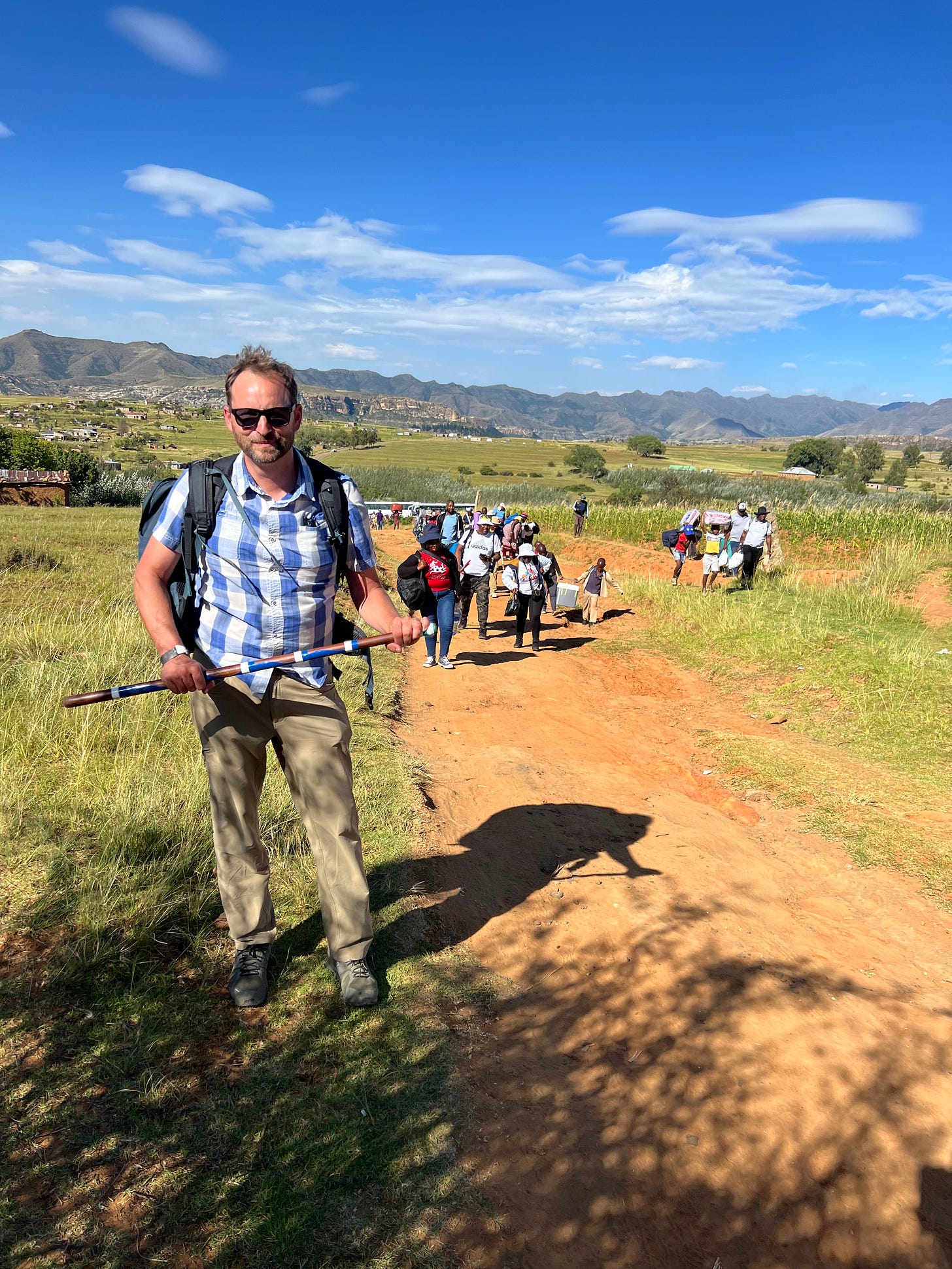

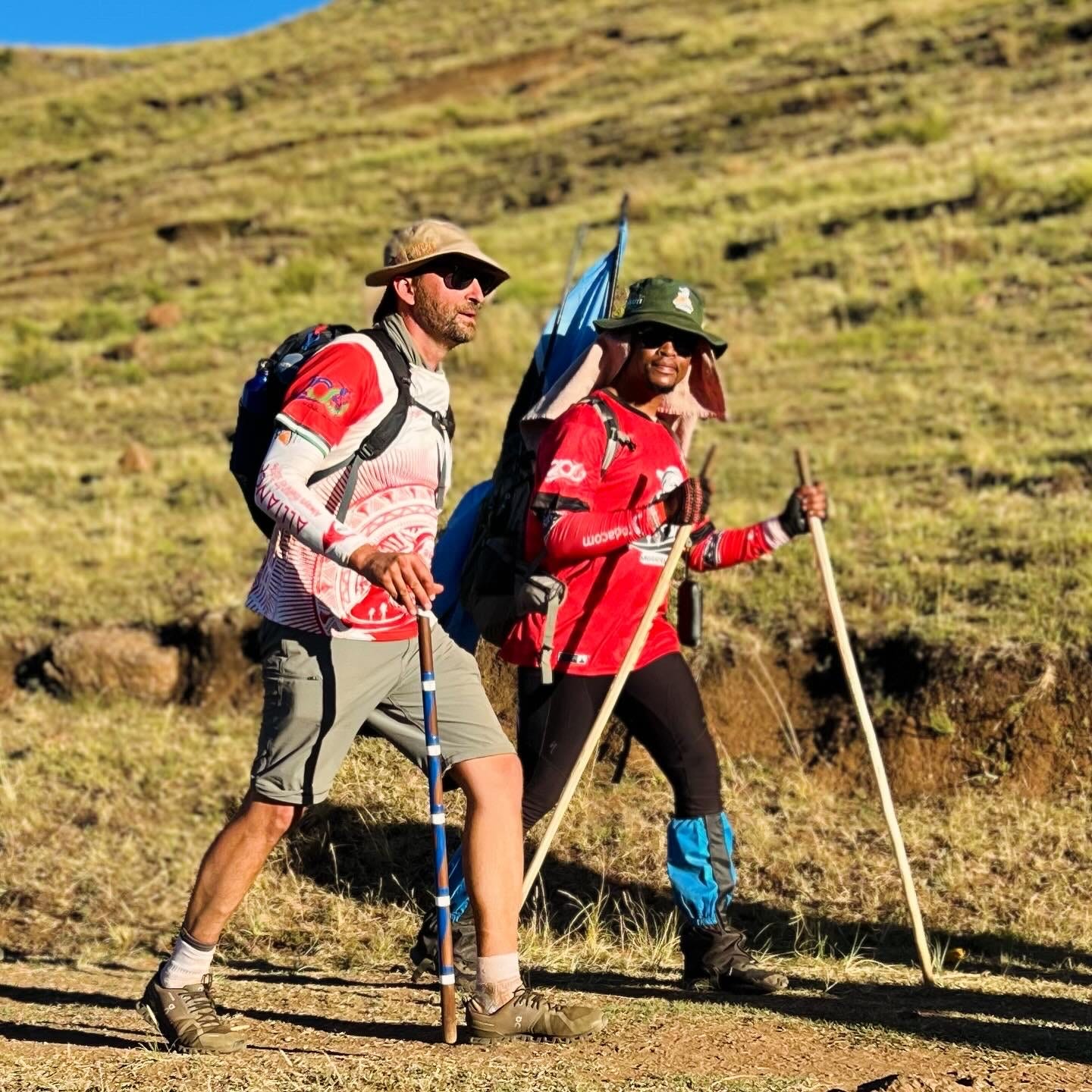
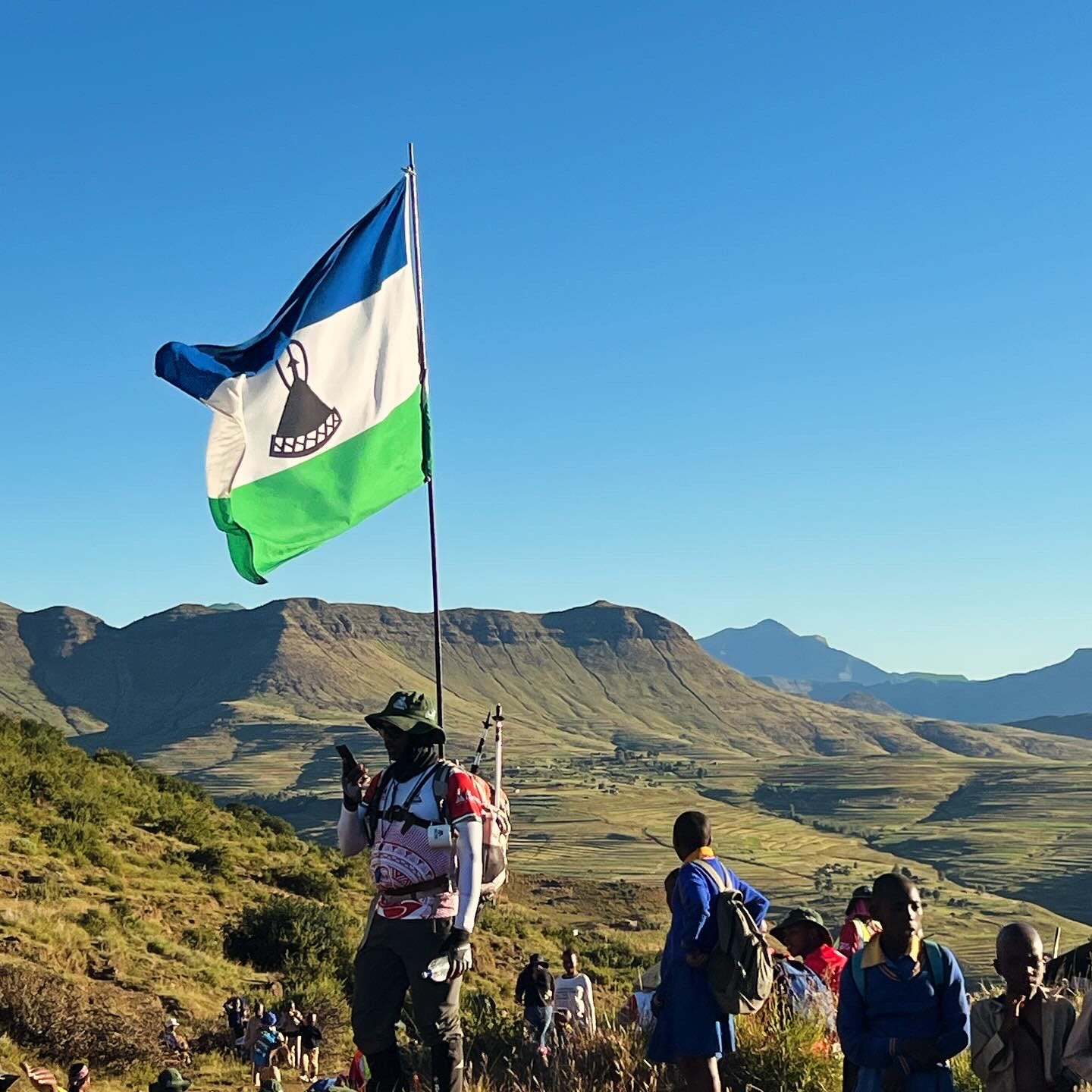
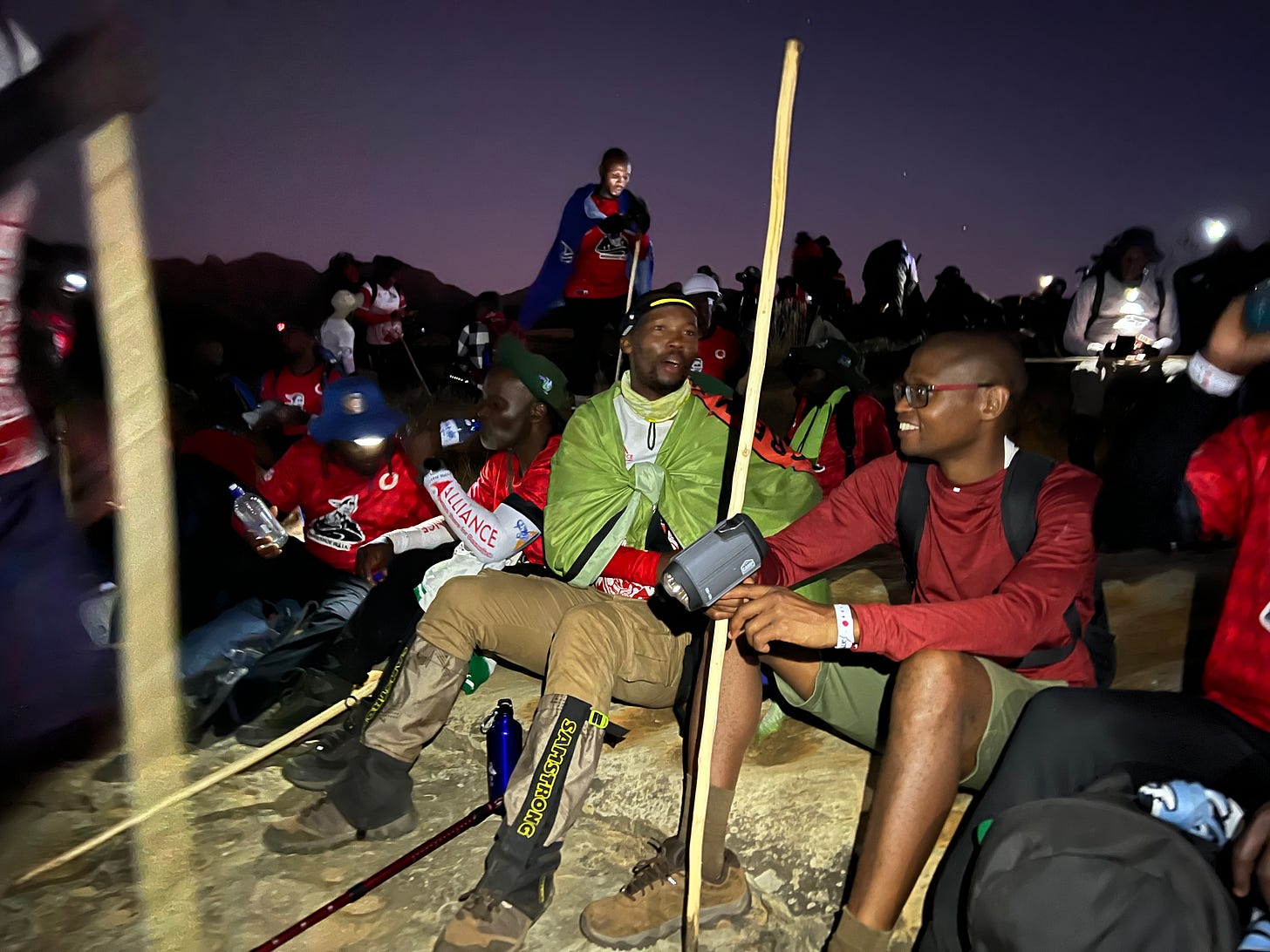


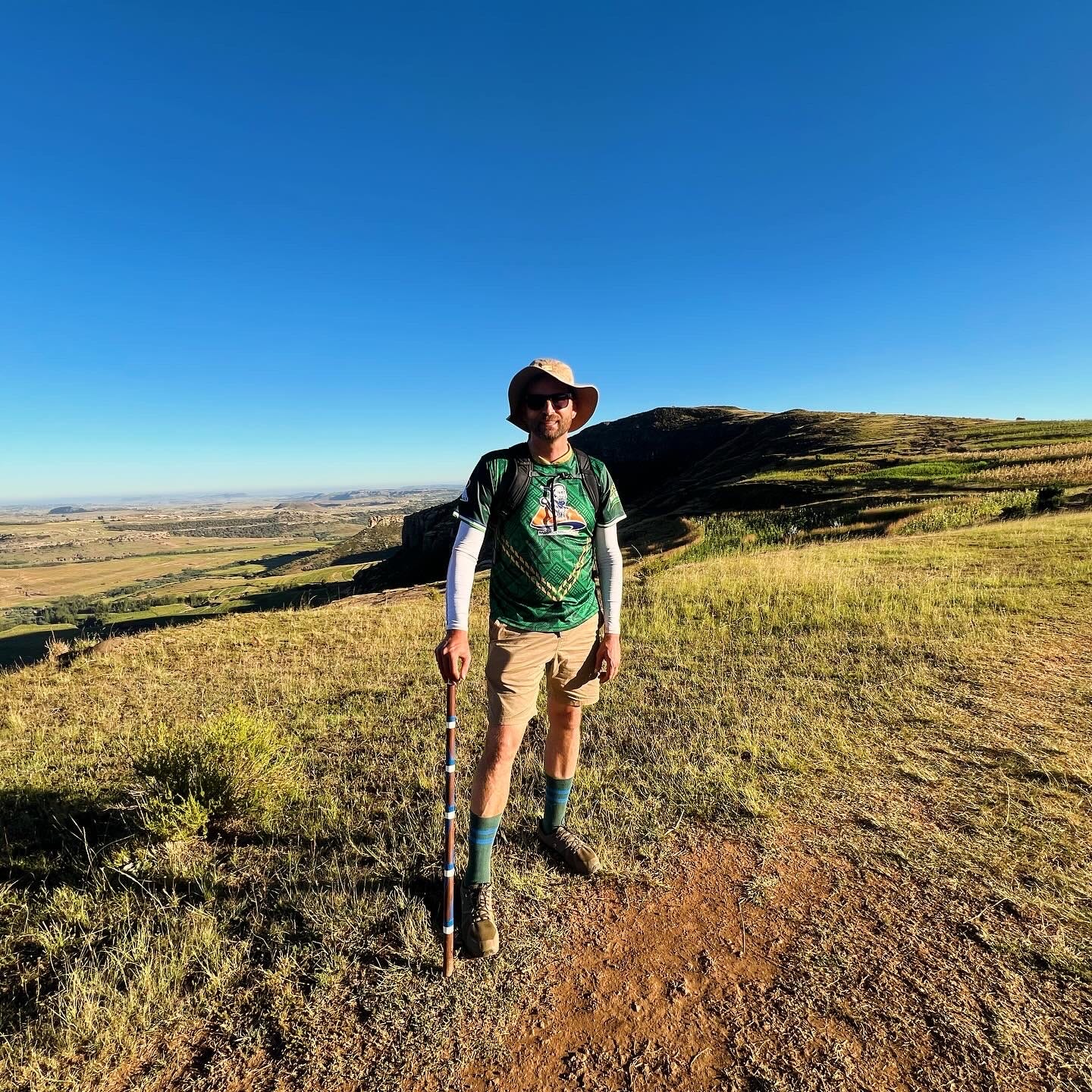
You’re having quite an adventure!!
Wow!
Way to go Ryan/Muso!
Talking the talk AND walking the walk.
An interesting read today.
Keep on truckin'...